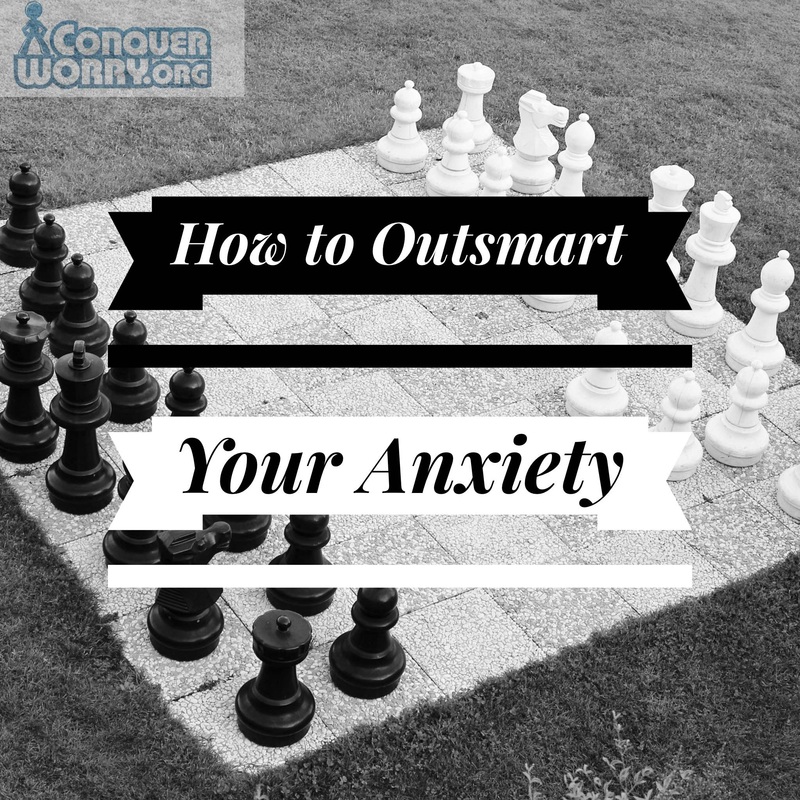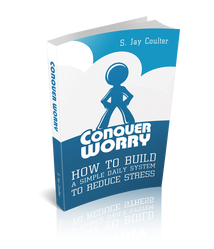|
Guest Post by Tim Stoddart Edit and Post Design by Christy Zigweid Photo by markus53 via Pixabay - made using @WordSwagApp In general, anxiety is part of the human experience. It’s a natural reaction to stress. It might show up as sweaty palms before an interview, chaotic thoughts clashing in your head before making a big decision, or a general sense of unease in daily situations like meeting new people. Anxiety spans across a broad spectrum. One of the most common mental illnesses affecting U.S. adults--about 40 million—are anxiety disorders. When anxiety levels become difficult to control and negatively affect day-to-day living, it can be deemed an anxiety disorder. Anxiety can lead to a host of physical problems, as well as life problems: anxious habits, substance abuse, difficulty with relationships, problems at work. No matter how it shows up in your life, anxiety can be troublesome. An anxious response can range from uncomfortable to inconvenient to overwhelming. Even in situations of “minor” stress, our brains behave differently and we don’t always think clearly. Your Brain on Anxiety
Our brains can also trigger an anxious response from something internal—a quiet thought or worry—and experience the same fear, dread, or apprehension. Our bodies still react, and our thought patterns can become clouded by emotions. Anxiety is a powerful force in your brain. But how you react to it can make a huge difference in the power it has over you. Don’t think of anxiety as all bad! That energy in us can also help us to be more productive, pay attention to detail, and creative. It’s not about beating anxiety, but outsmarting it in your everyday life. Slow Down
Breathe Being told to “just breathe” can be really frustrating in the heat of anxiety, but it’s actually great advice. In a research study, scientists found that certain emotions change our breathing pattern. Similarly, by taking control of our breathing, we can change the way that we feel. When we’re anxious or stressed, our heart beat elevates and our breathing becomes fast and shallow. If we continue this breathing pattern, we prolong the emotional response. According to the study, the best medicine for anxiety is “deep, slow breathing into the belly.” Be Mindful Does your mind ever start racing, but you need to get focused again? Grounding techniques are a practice in mindfulness that you can use every day. When the thoughts start picking up speed, ground yourself by focusing on something concrete. Focus your attention on sensory details around you and stay in that moment. Wiggle your fingers and watch their movements. Tap your feet in a rhythm. Focus on those sensations and the control that you have over your body. Look up at the sky, hone in on the movement of the clouds. Describe the colors and shapes of the leaves—aloud or in your head. Whatever you can do to put yourself in the present and relax, do it. We spend so much time worrying about the past and the future, but things slow down when we can put ourselves in the present. In general, you can practice mindfulness at any time—while you’re eating, in the shower, on a walk, or listening to music. It can help in any intense emotional state. Get Centered
Get Outside It’s easy to lose touch with Mother Nature amidst our busy lives. But, time spent outside is important—it’s a break from our everyday stresses, it can help us to relax and breathe easier, and it’s the ultimate place to get serene and practice mindfulness. Even if it’s just for a short stroll, by stepping outside to appreciate the tangible beauty in our world, we can bring ourselves back to center. Meditate A great activity to practice outdoors is meditation. When we’re tangled up in anxiety, it might seem impossible to sit still, be quiet, and meditate. Like any skill, meditation gets easier with practice. Think of meditation as personal therapy time—a space to untangle your intense emotions. First, control your breathing and let your emotions settle. Then, quiet your mind. What are you feeling? Are you bothered, angry, fearful, stressed? Taking the time to meditate reminds you that—here, in this moment—you are safe and you are okay. You can meditate at home, outdoors, or even in a quiet place on your work break. Meditation isn’t limited to sitting cross-legged in the lotus position. You can sit in a chair, lie down, or take a walk. Some people enjoy guided meditation recordings, calming music, or nature sounds, while others prefer quiet. And it doesn’t have to last an hour—try 15 minutes, 5 minutes, or even just 1 minute. Get Real
Reason with Yourself If we can slow down our thoughts, we have a chance to challenge some of our thinking. When you’re feeling nervous, afraid, or overwhelmed, talk to yourself like you would a friend. What’s going on? What’s inspiring your fear or apprehension? Are your fears posing an imminent threat, are they far-off in the future, or are you stuck on the worst-case-scenario? What can you control, and what’s out of your control? Take action when you can, but so much in life is out of our control. Ease the panic by identifying what you can do and what you must let go. You can use internal self-talk to get real with yourself; try talking aloud, or writing those thoughts into a journal to make more sense of them. Reasoning with yourself may not “fix” the problem, but you parse through the intense feelings and see things more realistically. Be Kind to Yourself Many people, like myself, get frustrated with their anxiety. We perceive ourselves negatively when anxiety has a hold on us. Instead, make an effort to be a patient and accepting friend to yourself. Allow your feelings to exist without judgment. Bolster yourself against negative thoughts, rather than putting yourself down even more. One of the best ways to practice this is through positive affirmations—statements or mantras that you use to bring positive thinking into your life. You can say them in your head, aloud, or write them down and post them somewhere you can see them. The idea is to practice them daily and change the color of your thoughts. No need to be insincere—use statements you believe in, that will actually help you. I am safe. Life is good. It’s a beautiful world. Let it Out Last but not least, we all need an outlet for our feelings. With any emotion, it manifests in our body as energy—and you can feel that pent up energy and tension with anxiety. Find a way to let it out. For many of us, this means having a trusted friend you can talk to or call in tough moments, or scheduling time to meet with a therapist. Talking it out is a way to release those feelings and reason with yourself and someone else in the process. There are also healthy routes of self-expression worth trying. Journaling is extremely effective for many people, helping them to interpret and understand their thoughts. But, writing isn’t the only way—paint, draw, collage, sing, dance, cook a meal. The idea is to find a way to express whatever chaos goes on in your brain so you can lessen the negative impact it has on you. Anxiety is Smart but You're Smarter
About the Author
1 Comment
Alicia Austin
12/30/2018 08:04:12 am
Thank you.
Reply
Leave a Reply. |
Build Your Action Based Stress Reduction System
Popular PodcastsOlympian Suzy Favor Hamilton - From Fame to Prostitution to Advocacy
Hall of Fame Basketball Star Chamique Holdsclaw on Mental Resilience Diana Nightingale on her husband Earl Nightingale's Principles for Mental Health Success JoAnn Buttaro on Date Rape & PTSD Survival Story: Its Never Too Late Gabe Howard on BiPolar Advocacy Phil Fulmer on Teen Suicide Prison, Bipolar and Mania with Andy Behrman Columbia Univeristy's Dr. Rynn on OCD Archives
March 2018
Categories
All
|









 RSS Feed
RSS Feed





